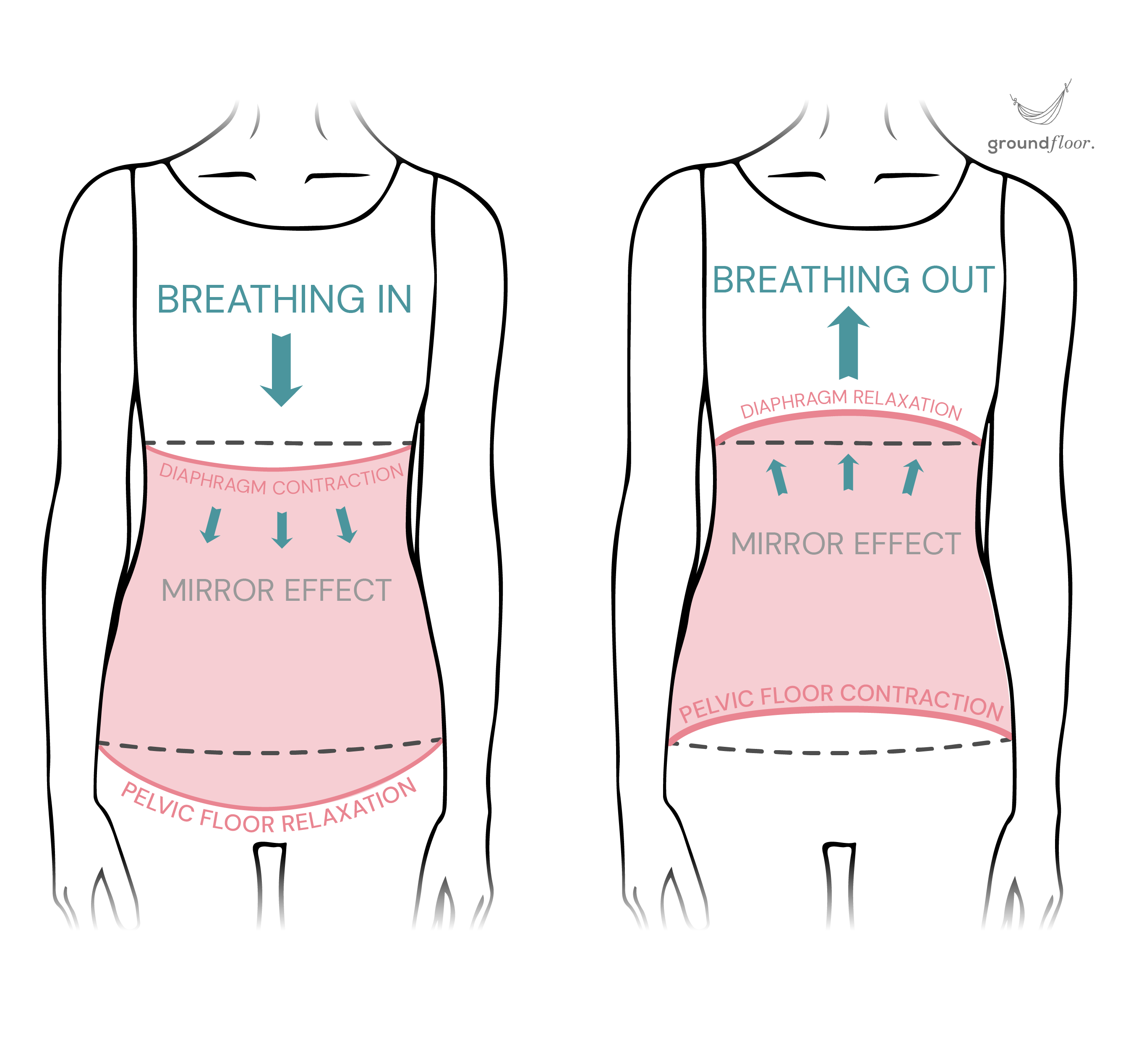
Did you know that your pelvic floor is a key component of your core and a breathing muscle? If this statement surprises you, keep reading to explore the intriguing connection!
In this article, we will delve into the anatomy of the core and biomechanics of breathing. We will also discuss different breathing patterns, their effects on the pelvic floor, and the benefits of practising diaphragmatic breathing.
Anatomy and biomechanics of the core
There is an anatomical and biomechanical connection between the diaphragm (the major breathing muscle), the pelvic floor, the transversus abdominis (the deepest layer of the abdominal wall), and the lumbar multifidus (lower back deep muscles). Together, these components form what we commonly refer to as the core.
You likely have encountered this term in the fitness or wellness industry, albeit in a simplified or even incorrect context. It is often narrowly used to describe only the deep abdominal muscles, providing an incomplete and inaccurate definition. In reality, the core is a dynamic and functional unit situated at the centre of the body, resembling a canister with the pelvic floor at the base, the diaphragm at the top, and the transversus abdominis and lumbar multifidus encompassing it.
The pelvic floor and the transversus abdominis are synergistic muscles, meaning they typically perform the same action simultaneously when all is functioning well. This synergy works in both ways: when one contracts, the other automatically follows suit.
Conversely, the pelvic floor and the transversus abdominis relax and lengthen in response to a contraction of the diaphragm, their antagonist muscle (they share opposite actions).
These interconnected muscles work in harmony, allowing you to perform essential functions such as inhaling and exhaling, managing intra-abdominal pressure, and stabilising and elongating your spine. To effectively engage your core, it is crucial to incorporate one or multiple of these functions into your exercises.
The involvement of the core in breathing biomechanics
The diaphragm is a dome-shaped muscle located behind your ribcage. It plays a pivotal role in dividing your trunk into two distinct cavities: the thoracic (at the top) and the abdominal (at the bottom).
During inhalation with diaphragmatic breathing (often referred to as abdominal or belly breathing), the diaphragm contracts, and as its highest point descends, it flattens out. This creates additional space for your lungs to expand, allowing them to draw in air due to the resulting decrease in pressure within the thoracic cavity.
Simultaneously, as the diaphragm contracts, it pushes the organs and viscera downward, reducing the available space within the abdomen and elevating the pressure within it. It prompts a reflexive response where both the pelvic floor and the abdominals automatically and involuntarily lengthen. It increases the volume of the abdominal cavity, which regulates the pressure. This pressure management strategy is usually absent in individuals with a hypertonic pelvic floor.
During exhalation, the opposite sequence unfolds. The diaphragm relaxes, returning to its domed shape and moving upward. Simultaneously, the pelvic floor and transversus abdominis muscles respond with an automatic and involuntary gentle concentric contraction, returning to their normal state of tension. This is why breathing out during an effort activates both your pelvic floor and abdominals, providing essential stability to your trunk and helping prevent injury during strenuous activities.

The importance of diaphragmatic breathing for the pelvic floor
The dynamic relationship among the core components is highly interdependent and requires careful coordination. Each muscle in this complex system is in a constant state of movement, transitioning from contraction to stretch in synchrony to generate your breathing rhythm. Through diaphragmatic breathing, you can automatically relax and stretch your pelvic floor with each inhalation. It is designed to ensure our respiratory function at rest and promotes a state of calmness.
Accessory muscles, such as Serratus Anterior, scalenes, pectoralis minor or sternocleidomastoid, can participate in breathing as supplementary support in specific situations. For example, it is appropriate when there is a greater oxygen demand. However, relying excessively on these accessory muscles for inhalation, instead of engaging the diaphragm when it is not necessary, leads to what is known as chest or shallow breathing. This breathing pattern goes against your physiological design and can negatively impact your pelvic floor.
Indeed, shallow breathing reduces diaphragm engagement during inhalation. Consequently, this leads to less stretching of its antagonists, the pelvic floor muscles, resulting in decreased mobility over time. Ultimately, this can contribute to the development of a hypertonic pelvic floor.
While your breathing pattern operates unconsciously, it can be changed through dedicated practice. Attempting to consciously control your breath throughout the day is impractical and impossible. Still, by consistently incorporating a few minutes of breathing exercises into your daily routine, you can integrate new patterns into your nervous system, making them automatic over time.
This is why Ground Floor app offers a dedicated guide to help you master diaphragmatic breathing, complete with a variety of breathing exercises to facilitate its implementation. Additionally, these exercises provide a range of health benefits, including vagal stimulation and overall body relaxation.
Expand your approach to pelvic health with breathing exercises
The concept of the pelvic floor as a core and respiratory muscle must appear less surprising now that you understand its intrinsic connection to the diaphragm, abdominal muscles, and lumbar multifidus.
In light of this connection, our app offers specific breathing exercises designed to enhance diaphragm engagement, indirectly benefiting the pelvic floor through their antagonistic relationship. This broadens the range of techniques available to improve your pelvic health and enables you to work in a highly functional and efficient manner, delivering optimal and faster results.
Take your pelvic floor check-up now to discover whether diaphragmatic breathing exercises are recommended for you.
Share this article with your friends and help spread the knowledge together! ↓
Share this article with your friends and help spread the knowledge together! →





Download the app to learn more about this topic and receive tailored information about your pelvic health!


Related articles

7 min read
The truth about having a tight pelvic floorA hypertonic or overactive pelvic floor (distinct from an overactive bladder) results from the buildup of excessive tension within the muscles. In this situation, the pelvic floor can also be referred to as "tight", which is often wrongly believed to be a good thing. This article will debunk this myth and shed light on the misconceptions surrounding this topic. Delving into the consequences of such a condition, we will also explore the common errors that can lead to a hypertonic pelvic floor and provide effective and practical strategies to address it.
→ Read more

3 min read
Breathing for your pelvic floor and the connection with stressWhile it is well known that stress can have a detrimental impact on your overall health, have you ever considered its effects on your pelvic floor?
This article will explore how your nervous system toggles between two modes to manage your body's functions. We will uncover what happens in your pelvic floor when this equilibrium is disrupted due to stress. We will also delve into the effectiveness of breathing exercises in stimulating your vagus nerve to regulate your nervous system and restore this balance.
→ Read more

3 min read
Anatomy and functions of the pelvic floorToo many people have limited knowledge about the pelvic floor and its purpose, often associating it solely with urine leakage or childbirth. However, the truth is that the pelvic floor encompasses much more than that.
In this article, we will simplify the complex concepts of pelvic floor anatomy, functions, and mechanisms of action. Our goal is to make it easier for you to understand and appreciate the importance of this vital structure.
→ Read more

